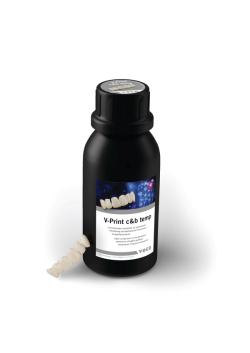- About Us
- Advertise
- Editorial
- Contact Us
- Terms and Conditions
- Privacy Policy
- Do Not Sell My Personal Information
© 2025 MJH Life Sciences™ and Dental Products Report. All rights reserved.
How to restore mandibular anterior teeth
Recent reports and surveys affirm the importance of the teeth and smile to overall facial esthetics.1,2 As the world’s population ages, it seems that more people are keeping their natural teeth into their later years.3
Recent reports and surveys affirm the importance of the teeth and smile to overall facial esthetics.1,2 As the world’s population ages, it seems that more people are keeping their natural teeth into their later years.3
Studies of the aging face confirm that as lip musculature becomes more flaccid and responsive to gravity and fat volume changes, lower front teeth become more important in the smile display.4
A recent PubMed search for “mandibular anterior teeth restorations” reveals only 112 listings, and only six of those truly address the topic. By contrast, a similar search for “maxillary anterior teeth restorations” lists thousands of citations.
The esthetic restorative dentist and dental laboratory technologist of today and tomorrow need guidance for preparation and fabrication of predictably esthetically successful dental restorations for mandibular anterior teeth and their dental implant replacements.
Because the rules and examples for maxillary anterior teeth are so abundant, it seems reasonable to bring the same design concepts for individual and collective fabrication of the maxillary anterior teeth to the work for lower anterior teeth.
This practice is unfortunately fraught with error as the anatomic realities of incisal embrasure form, width/length differences, incisal edge display, and bilateral symmetry for the maxillary anterior teeth, are actually quite opposite to those for the mandibular anterior group.5
This article is intended to clarify these differences and provide guidelines for the preparation and fabrication of natural appearing restorations for mandibular anterior teeth. The clinical case example will focus on the porcelain veneer restoration.
The author’s premise is that because the availability of sound rules and techniques addressing the restoration of mandibular anterior teeth is so limited, many dentists and technicians consider working with this group of teeth to be more difficult than the maxillary anterior teeth. A careful look at the rules of preparation and restorative fabrication that follow actually demonstrates that these teeth should be far easier to work with than those of the maxilla.
As Dr. Morton Amsterdam taught, “We all have eyes to look with, but we only see what we know.”6 Or, as Dr. Harold Shavell has recently written, “The eye does not see what the mind has not taught it to recognize; hence, not every closed eye is sleeping, and not every open eye is seeing.”7 Once the lessons about to be described have been studied and digested, a straightforward way to esthetically successful mandibular anterior dental restorations should become clear.
The essence of mandibular anterior preparation and restorative fabrication lies in the natural anatomy of these teeth, both individually and in composition; their function against the lingual surfaces of the maxillary anterior teeth, and the way they are seen in smile display. Dr. Leonard Abrams called this latter observer’s perspective “the view.”8 His vigorous study of dental anatomy, the human dentition in biologic perspective, and his extraordinary insight into the essential elements of tooth display are the groundwork for the lessons about to be described.
Click here to see how this case was solved with step-by-step photos ...
Mandibular anterior teeth
Previous publications8, 9 have already demonstrated that:
1. The six mandibular anterior teeth (some argue that the mandibular first premolars should be included, making eight) are essentially equal in width and length to the normal observer with good vision under good lighting conditions at a 2- to 4-foot viewing distance. This continuous series of similar shapes can fool the observer into thinking that all the teeth are present even when, by nature or by therapeutic choice, one may be missing. This phenomenon of shape monotony would be barely conceivable for the maxillary anterior teeth.
2. For the patient with functional anterior incisal guidance, the mamellons quickly wear away and the widest part of the lower incisor becomes the incisal edge. Thus there can be no incisal embrasures on the labial aspect. Any ill-advised attempt for the dentist or dental technologist to place visible incisal embrasures on the labial aspect of these teeth results in the unnatural “picket fence” look. This is the most common fabrication error for these teeth.
3. The natural labio-lingual emergence angle of the anatomic crown of the mandibular incisor is between 22 and 23 degrees to the horizontal. This labial tilt is enhanced when the patient functions (e.g. speaking, smiling, masticating) such that the incisal edge becomes the key display component presented to the viewer (“the view”). That is, the entire incisal edge from lingual to labial border. Thus the lingual preparation of the mandibular anterior tooth is much more critical to the final esthetic display of the restoration than for the maxillary anterior tooth.
4. Many natural occurring and most therapeutic occlusal schemes place the mandibular anterior teeth inside the maxillary anterior teeth for function. This “anterior coupling” arrangement limits the length of the mandibular anterior restoration to the lingual contacting surface of the opposing tooth. The dimension of incisal edge reduction is critical in this regard.
Porcelain veneer restoration
The recommended preparation design follows the studies exemplified by Stappert et al.10, Jacobsen and Frank11, and the observations published by Friedman12:
Successful, long-term bonding of a porcelain restoration to a tooth surface requires preservation of an enamel substrate on the tooth. At least 50% of the body of the tooth and all of the margins should be in enamel. A relatively uniform 0.5 mm reduction of the labial surface should be measured and performed.
A 1.5 to 2.0 mm reduction of the incisal edge is recommended for strength, longevity and esthetics of this critical display component, with no overlapping onto the lingual surface. The angle of this reduction should be perpendicular to the long axis of the tooth, not to the horizontal. A second plane of reduction should follow the natural crown profile of the tooth as this contour approaches the incisal edge.
Clinical case study
Step 1: The patient presented with Class IV fracture (MILaLi) of her mandibular right central incisor (Figs. 1-2). A bonded composite restoration had been previously placed but failed within two years. So, the decision was made to prepare and fabricate a porcelain veneer restoration. The completed preparation is shown in Figs. 3 and 4.
Step 2: Ultrapak 000 retraction cord (Ultradent Products) has already been placed. Digital photographs are made with the shade tab chosen prior to any preparation (Fig. 5), and the Vinyl Polysiloxane impression made utilizing Vaccu-sil in a BFC syringe (Fig. 6, Ho Dental Products) is shown in Fig. 7.
Step 3: A direct fabricated bonded composite temporary veneer is placed (Fig. 8). This provisional/temporary technique requires no etching of the tooth surface, application of a thin layer of bonding resin to the clean surface, and direct shaping/molding of the composite of choice. Note the markings with AccuFilm (Parkell Inc.) on both central incisors.
Step 4: Stone models and die are fabricated (Fig. 9) and the fired porcelain veneer is made (Fig. 10, Mr. Shin Ashina, Tanaka Dental). The veneer is etched with hydro-fluoric acid at the laboratory prior to chairside try-in. After try-in and determination of shade of luting resin using water soluble try-in paste, the veneer is cleaned with phosphoric acid (38-40%), painted with freshly mixed silane bonding agent and placed on the etched/bonded surface of the preparation with the chosen shade of luting resin. Details of this protocol have been previously published13. The adjacent teeth are isolated from the bonding/luting procedure using ultrathin mylar matrix material (Ho Dental Products) shown in Figs. 11- 12. A one-month post-op of the final veneer is shown in Fig. 13.
Conclusion
Mandibular anterior teeth are distinctly different in many aspects of their form and function from their maxillary counterparts. It is important for the restorative dentist and dental technologist to carefully review this information prior to embarking on their work to fabricate esthetic restorations for these teeth. The choice of source material for this review is critical as many published articles do not demonstrate accurate renderings of natural dental anatomy of the lower anterior teeth. Yet, once studied and learned, the rules for fabrication of such restorations seem simple and straightforward.
Product support for this article was provided by Ho Dental Company.
References
1. Nobel Biocare consumer survey 55,000 Americans: “Smile and appearance of teeth scored highest…” February 26, 2009.
2. ADA National online consumer survey, ADA News June 18, 2012. “A nice smile outweighed…”
3. Wu B et al. Edentulism trends among middle-aged and older adults in the United States: comparison of five racial/ethnic groups. Community Dent Oral Epidemiol. 2012 Apr; 40(2):145-53.
4. Fitzgerald R et al. Update on facial aging. Aesthet Surg J. 2010 Jul-Aug; 30 Suppl:11S-24S.
5. Greenberg J. Can they really be opposite? A new look at four critical aspects of anterior dental morphology. Comp Cont Ed Dent. Sept 2008; 29(7):378-385.
6. Amsterdam M. Periodontal Prosthesis: 25 years in retrospect. Alpha Omegan December 1974; pp 8 – 52.
7. Shavell H. Mental imagery: the key to dental artistry. J. Esth. Rest. Dent. 2013; 25(1):4 – 15.
8. Abrams L, Presser FD. “The view” and the canine connection: an atlas of mandibular anterior tooth esthetics. J Esthet Dent. 1998; 10(3):104-120.
9. Kraus BS, Jordan RE, Abrams L. Dental Anatomy and Occlusion. Philadelphia, PA: Williams and Wilkins; 1969.
10. Stappert et al. Longevity and failure load of ceramic veneers with different preparation designs after exposure to masticatory stimulation. J. Pros. Dent. 2005; 94:132-9.
11. Jacobsen N, Frank C. The myth of instant orthodontics: an ethical quandary. JADA 2008; 139:424-434.
12. Friedman MJ. A 15 year review of porcelain veneer failure: a clinician’s observations. Comp. CE in Dentistry 1998; 19(6):625-632.
13. Christensen GJ. CRA Status Report: Lower Anterior Veneers. CRA Foundation Newsletter, June 2006; pp 1-2.



